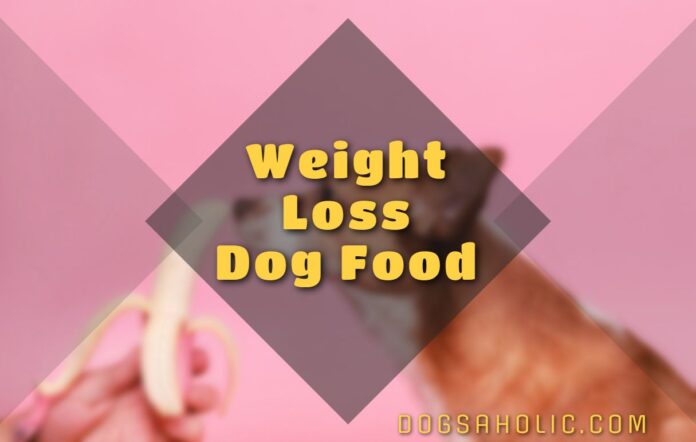As many as four out of five owners who have dogs that are obese do not recognize this fact. Even when it is pointed out to them 60 – 70% of them will not agree and will carry on as normal with their dog.
The sad truth is that 45% of all the dogs in the US are either overweight or obese, that’s 35 million dogs whose lives are at risk.
Possible Consequences of Obesity in Your Dog
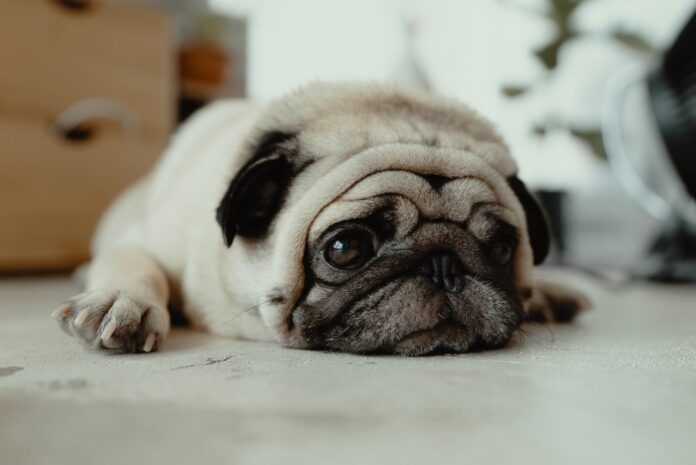
You may think that it is an exaggeration to say your dog’s life is at risk when they are overweight or obese. This however is not the case and the first fact that needs to be faced up to is that obesity WILL cut your dog’s life expectancy short by up to TWO years! And as if this fact is not enough your dog could suffer from the following:
- A compromised immune system
- Breathing troubles
- A greater risk of heat stroke
- Pancreatic
- Diabetes
- Orthopedic concerns
- Mammary tumors
- Heart problems
- High blood pressure
- Skin conditions
It really does go without saying that it is now time, in fact long overdue that we recognize this problem of obesity in our dogs and rectify it as soon as possible. The first step in this process; recognizing that they are overweight and putting into action a plan for weight loss for dogs!
We’ve written an article to give you solutions if your dog is obese, so don’t forget to read it.

Recognizing your dog is overweight or obese can be difficult for a number of reasons. Firstly we live with our beloved pooches every day and do not necessarily notice the difference in their weight over time.
Secondly, we don’t weigh our dogs every day or every week as we so often do ourselves; those few pounds extra go unnoticed. And lastly and most dangerously we don’t want to see our dogs could be overweight so we just ignore it.
However, checking our dog’s weight is extremely important for the health of our best friends and doing so can be so easy. Below are described a couple of ways how to do it.
Overhead Look in
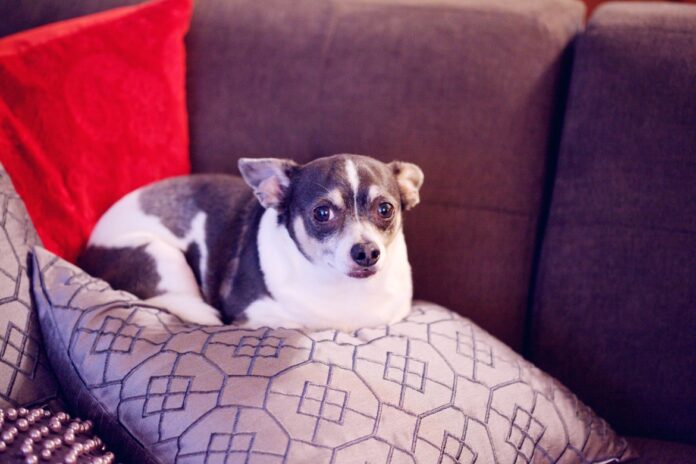
This is not the most reliable way to check your dog’s weight but as a quick guide, it can be useful. Firstly you will need to check from the side of your dog; what you are looking for is that his or her tummy tucks up from their chest and is not on a level or hangs down.
Next check from above, your dog should have a waist. If there is no inward curve at your dog’s waist he or she is overweight. Finally, feel for the ribs; you should be able to feel the ribs on all dogs and if you can’t or they feel like they are covered by a thick blanket; your dog is probably overweight.
Weigh-Ins

It is possible to weigh your dog at home if they are smaller and easily picked up. Before you do though, you will need to know your breed’s ideal weight so you can compare that against the weight of your own dog.
Once you have this information weigh yourself and then pick up your dog and step on the scales again. Subtract your weight from the combined weight and you have your dog’s weight. You can then check that against the ideal weight for your dog’s breed.
If your dog is one of the larger breeds then you will be best taking them to the vets for their weight checks. It is virtually impossible to pick a large dog up and they more than likely will not fit on your home scales. Most vets offer a free weight service especially since dog obesity has become such a problem.
Here is a rough guide for the ideal weight of some of the more popular breeds.
| Breed | Ideal weight lbs (kg) |
| LabradorGerman Shepherd
Yorkshire Terrier Boxer King Charles Spaniel Doberman Border Collie |
65-80 (29-36)75-95 (34-43)
Less than 7 (3) 50-75 (22-34) 10-18 (4-8) 65-90 (29-40) 27-45 (12-20) |
It may be that you check your dog’s weight and they are well within the parameters they should be; all is good. However, if they do not and weight is an issue for your dog you need to act on it as soon as possible.
Reasons for Obesity
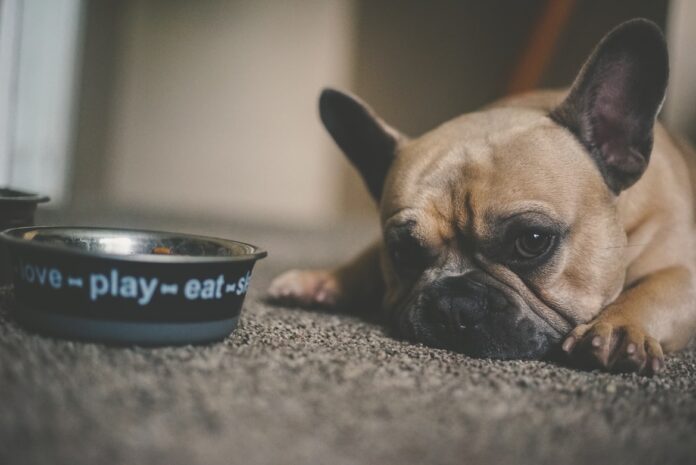
The major cause of obesity in our dogs is human error or negligence. We more than certainly are not intending to be cruel to our pets, in fact, the complete opposite is probably true. We are however no matter how hard we try to deny it literally killing our dogs with kindness in the form of treats and high-fat foods.
Lack of exercise can also play a part in the obesity levels of our dogs today. With our busy lives and lack of time, many dogs are not walking/exercising at much as they need.
Scientifically it has also been proven that some breeds of dogs are more prone to gaining weight than others whilst some are less likely to gain weight. Examples of these are:
| Breeds more prone to obesity | Breeds less prone to obesity |
| Labrador RetrieverDachshund
Rottweiler Beagle Bull Dog
|
GreyhoundGerman Shepherd
Yorkshire Terrier Whippet Lurcher |
What to Do Next

There are two alternatives to consider when it comes to placing your dog on a weight loss program. The first is to consult your vet and let him guide you through the process of getting your dog back in shape.
This will probably involve a prescription of weight management dog food, an exercise plan, and regular weigh-ins at the clinic. The benefits of allowing your vet to guide you are that he will notice reasonably quickly if the plan is not working and be able to test your dog for underlying issues.
The second alternative is to place your dog on a weight loss program yourself. To do this and stick to it can be difficult, you need to be highly motivated and prepared to do whatever it takes.
The First Step – Weight Loss Food

Food is the first consideration in any good diet plan. Are you feeding your dog correctly, the right amounts, and the best food for him or her?
1. When to feed:
Many dog owners feed their pooch by free choice meaning food is available 24 hours a day. This is not a good option as dogs just like us will feed when bored and not just when hungry.
The correct and best way to feed your dog is to offer small amounts of food 2 – 4 times a day. If this is difficult due to work/time constraints an automatic feeder can be purchased.
2. What to feed:
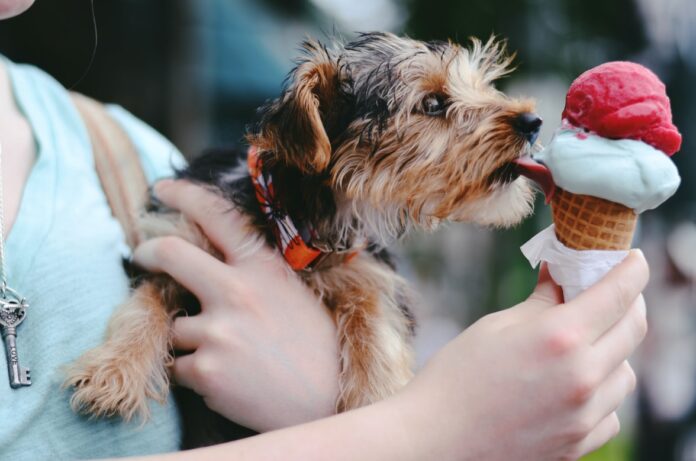
The type of food you feed your dog when on a diet is of the highest importance. It needs to be remembered here that if the calories consumed are higher than the calories burnt, your dog will be and will remain overweight.
Many foods described as diet, light or reduced-calorie, are actually not the best option. Many of these foods replace meat with carbohydrate fillers which may fill your dog on a short-term basis but not for very long.
You will soon find that you have a dog that is constantly crying and begging for food. When choosing a weight-loss food for your dog, look for one that contains:
- Below-average fat
- Below-average calories
- Above-average protein
Higher protein foods WILL make your dog feel fuller and will stop them begging for extras. They also help combat muscle loss which is an unwanted possible side effect of dieting.
Please note that when preparing servings for your dog you need to follow the feeding guidelines on the packaging and ensure you feed for their ideal weight NOT the weight they are at present.
Choosing a Commercial Weight Loss Food

If you choose not to feed your dog homemade weight loss food then you need to ensure that you pick the right commercial one for the job.
It is imperative that you choose one which is above average protein, below-average fat, and below-average calories. Also, remember that calories are taken in need to be lower than calories burned.
There are three choices when it comes to a commercial diet weight loss dog food and they are:
-
- Raw food
- Canned food
- Dry Food
Raw Food – If you go for a raw food diet, be careful to select a food that has been proven to be of nutritional value and does not say ‘for supplementation or intermittent feeding’.
1. Canned Food

Canned food is preferential to dry food as dogs seem to do better on a moisture dense diet. Halo Spots Stew canned food is an excellent wet food for dieting dogs. It is available in three different can sizes which means it is suitable for all dog breeds large and small. This product contains real meat which is fit for human consumption, meaning it is a high-grade product.
It comes in chicken, Beef, Salmon, and lamb.
2. Dry Food

When picking dry food you need to ensure that it has a high content of meat and is not all just dried carbs. Now Fresh Grain-free recipe dry dog food is an excellent choice. It has no rendered meats, animal by-products, growth hormones, artificial preservatives, grains, glutens, wheat, beef, chicken, soy, or corn. It is slow-baked in order to retain all nutrients and contains coconut oil which breaks down into simple sugars used for energy.
It also contains balanced proteins for weight and L-carnitine to support health and fat burning. And for those dogs that have hip or joint problems due to their weight, it contains glucosamine and chondroitin.
Another dry food option is Blue Buffalo Wilderness healthy weight dry food, which is designed around wolfs’ natural diet. Made with chicken, turkey, potato, carrot, cranberry, and blueberry it helps to achieve and maintain a healthy weight for your dog. It is certainly a sensible alternative to a raw food diet.
As an alternative to buying weight-loss food, you could choose to make one yourself. After all, there’s no better way of knowing and being sure about what is going into your dog’s diet.
Weight Loss Recipe Suggestion

This simple recipe is a good place to start. More recipe options are widely available on the internet should you choose to opt for something different. It is however best to find a recipe that works and stick to it.
- 2 cups of zucchini
- 2 cups of string beans, celery, and carrots
- 4 cups of cod fillet or chicken fillet
- First, chop up the vegetables and boil in a pan until tender.
- Poach the cod or chicken in water until cooked.
- When cooked drain both the vegetables and cod or chicken well.
- Mix together.
This recipe makes approximately 8 cups of food for your dog. As a feeding guide, give your dog approximately 2 cups of this recipe for every 1 they were having on their normal diet. This should give your dog a weight loss of approximately a pound per week; a good loss. If your dog is losing more than this, feed a little more of this recipe, and if he/she is losing less feed a little less.
Storage-wise this diet can be kept in the fridge for up to 3 days. It can be frozen and defrosted as needed. Always ensure it is fully defrosted and at room temperature before serving.
The treats we feed our dogs also need to be taken into consideration here. Most dog owners are prone to give their pooch bits from their table and plate, alongside other tasty nibbles actually made for them. You only have to walk into your local pet food store to see the aisles and aisles of pig’s ears, rawhide, chews, and chocolate.
Dogs DO NOT need these treats though and you CAN cut them out of their diet completely without doing any harm whatsoever. If you must give treats though give something that is beneficial such as dental chews or joint care sticks. You must compensate for this extra food by deducting a small amount of the food from your dog’s daily intake.
Step Two – Exercise
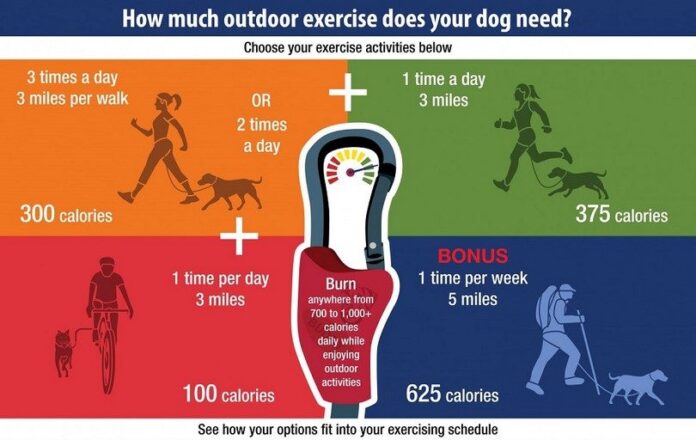
When it comes to weight loss and exercise we should be taking our dogs for a walk, run or swim for at least 30 minutes a day.
Playtime is also another good form of exercise, playing fetch in the house, running up and down the stairs, tug of war, anything you can think of that will get your dog moving.
Step Three – Monitoring Your Dog’s Progress
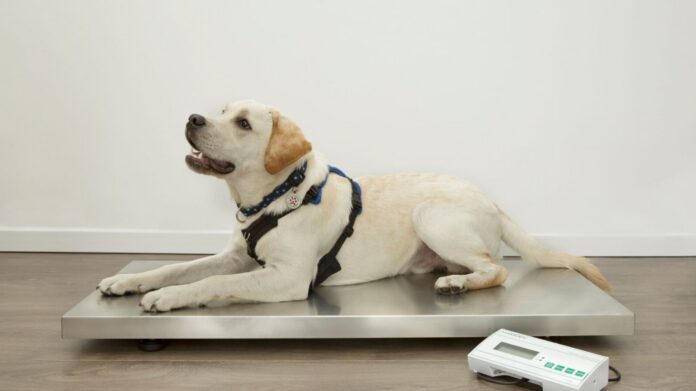
Progress made will more than likely be noticeable to the human eye. Your dog will probably look thinner, be more energetic and be generally more alert and happier after around a month.
To ensure your dog is benefiting, he or she should have regular weigh-ins every 2 – 4 weeks should be sufficient. You should expect a 1-2% body weight loss in this period but every dog is different and slightly less or slightly more of a loss is acceptable.
Weight Management Food After Diet

Once your dog’s ideal weight has been achieved you will need to take them off the diet. You do not want any more weight loss and keeping them on diet food will cause this. Ideally, you will now place your dog on a weight management food that is specifically catering to those dogs whose weight needs controlling.
If you choose not to go down this route and place your dog back on regular dog food there is more chance of yo-yoing weight. Check out our piece on non-additive dog food that may boost healthy weight.
Your dog’s food should include natural ingredients like apples, eggs, fish, grains, pumpkin, and so on. It may sound weird but dogs love apples (except for seeds – they are poisonous) and pumpkin is filled with fiber and beta-carotene, which become vitamin A in a dog’s system. Natural food is going to be a great help in maintaining Fido’s weight and he’s going to be more energetic and healthy with every bite.
Of course that he also needs specific food and you should always alternate canned with dry food. As specified above, canned food (make sure it’s not high in carbohydrates) is high in protein and helps Fido feel full faster.
Here’s our written list of the top canned canine food to guide you.
The dry food has its own job in maintaining your pooch’s weight as it offers nutrients and vitamins that help in developing muscles and increasing energy levels. It would be great to choose the slow-backed type or to make it yourself, at home.
Counting calories is a good method to make sure Fido is not overfed and starts gaining weight again. In order for this to be successful, you need to count every calorie, from treats and from regular food. It may seem a bit of hard work but it’s worth it as you’ll have a healthy and beautiful dog by your side.

